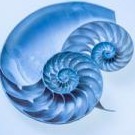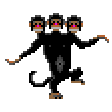A Very Still Night…500 sec Exposure with the M8
-
Recently Browsing 0 members
- No registered users viewing this page.
-
Similar Content
-
- 3 replies
- 1,039 views
-
Still trying
By jpreisch,
- 2 replies
- 138 views
-
- 6 replies
- 245 views
-
- 3 replies
- 452 views
-
- 4 replies
- 214 views
-





Recommended Posts
Join the conversation
You can post now and register later. If you have an account, sign in now to post with your account.
Note: Your post will require moderator approval before it will be visible.